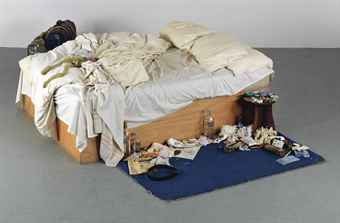
A recent study conducted at the European College of Neurpsychopharmocology has an interesting hypothesis, one based on Kant’s incantations on the sublime no less: whether ascribing to certain objects the label of “art” triggers a genuine neuro-chemical reaction in the brain.
A group of 24 subjects were asked to consider a series of images, all while their brain activity was measured using an electroencephalogram (EEG), and then asked to evaluate the images based on whether they were “pleasant” or “unpleasant.” Next, they were instructed on whether the images displayed were either “art” or real-life events, and subsequently asked to rate them according to “attractiveness” or “likability”. (All highly specific and scientific, of course, because we must not begin to ask what the cross-section of the group might have been, nor their backgrounds or individual prejudice).
Et Voilà: the study showed that the subjects showed a preference for the images labeled as “art.”
Noah van Dongen, of the Erasmus School of History, Communication and Culture in Netherlands said of the study, to Mail Online, “This suggests that when we expect to be dealing with an artwork, our brain responds differently than when we expect to be dealing with reality.”
Jonathan Jones, unsurprisingly, has picked up on the study to justify a societal interest in works that he deems to be of a lesser-aesthetic quality (say: Tracey Emin’s My Bed) and asks the question in a recent column for the Guardian, “Can you turn ordinary objects into art simply by saying so?”
He summarizes his argument with a “But art isn’t about cool contemplation—it’s a red-blooded reframing of emotion.” It is an effort at saying we are sensitized to violence, and are less “emotionally affected” by “art” than reality.
Although the science is yet unclear, and perhaps requires further investigation—what certainly is revealed is the success of “art” in its capacity to convince. Being the post-De Bordian “Society of Spectacle” that we are now, all is convincing, all is likeable, even, as long as it is art.
Here it seems only natural to mention the events that unfolded at Art Basel Miami Beach last year, where visitors to the fair stared on as a woman stabbed another with an X-Acto knife. Because, of course, they thought it was art, and nothing more. (Or Real).
“A guy walked up to me and said, ‘I thought I saw a performance, and I thought it was fake blood, but it was real blood,” said a visitor at the scene to the Miami Herald that day.